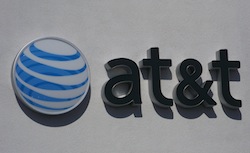
Although AT&T didn’t break out how much of the budget it plans to spend in California, it said it will add 200 new cell sites and upgrade 500 existing sites to 3G capability in the Golden State this year on top of 200 new sites and 320 site upgrades in 2009. The carrier has spent $7.3 billion on wireline and wireless networks in California from 2007 to 2009, $1.5 billion of that on wireless in particular, according to a release from AT&T’s office in Sacramento.
[aditude-amp id="flyingcarpet" targeting='{"env":"staging","page_type":"article","post_id":161025,"post_type":"story","post_chan":"none","tags":null,"ai":false,"category":"none","all_categories":"business,mobile,","session":"D"}']The company said its 2010 budget includes a $2 billion increase in capital spending for “wireless and backhaul related to AT&T’s wireless network.” Backhaul refers to the portion of its wireline network that moves wireless voice and data traffic when it’s not flying through the air.
AT&T’s spending seems to be on par with that of rival carrier Verizon Communications, whose capital budget is projected to be $16.8 billion to $17.2 billion, compared to $17 billion in 2009, the company stated in a Jan. 26 earnings release.
AI Weekly
The must-read newsletter for AI and Big Data industry written by Khari Johnson, Kyle Wiggers, and Seth Colaner.
Included with VentureBeat Insider and VentureBeat VIP memberships.
The breadth and strength of AT&T’s 3G network has been called into question by a series of ads Verizon has been running on TV and in other media for several months, depicting AT&T’s coverage as sparse compared to Verizon’s. This led to an air war of commercials from each carrier dissing the other’s network and providing actor Luke Wilson with a steady job.
Pressure on AT&T’s wireless network has been building ever since it was picked as the exclusive carrier for Apple’s wildly popular iPhone in 2007. It can expect more pressure once Apple starts selling its new iPad tablet computers, whose 3G version would also run exclusively on AT&T.
Wireless data traffic on the AT&T network has grown more than 5,000 percent over the past three years, the company said, largely attributed to growth in the sale of smartphones, which now account for 40 percent of its postpaid customer base.
Despite the negative publicity about a weak network and dropped calls, AT&T appears to be actively pursuing a build out program.
The deployment of High-Speed Packet Access (HSPA) 7.2 technology is continuing along with a second AT&T initiative to increase the number of high-speed backhaul connections to cell sites, primarily with fiber-optic connections. In addition, improvements to its 3G network will bring the network closer to offering 4G/LTE broadband technology, offering data speeds 10 times faster than on existing 3G networks. AT&T currently trails Verizon in this race; Verizon anticipates having faster 3G networks up this year, while AT&T said it won’t be ready until 2011.
VentureBeat's mission is to be a digital town square for technical decision-makers to gain knowledge about transformative enterprise technology and transact. Learn More
